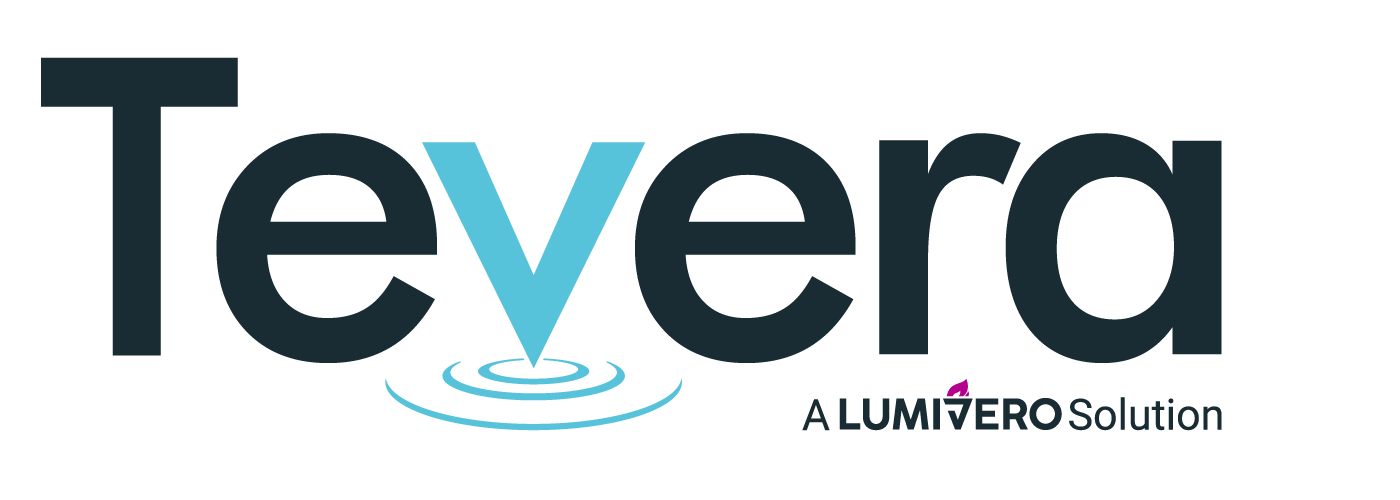How to Take Your Program Online
The number of students taking online courses has exploded in recent years. Now, with COVID-19, programs are being forced to go online, whether they’re ready or not. Fortunately, because of the growing interest in flexible, online programs, there are many resources, tips, and best practices available to make the transition easier. No matter if your program is normally in-person, completely online, or you offer a blended format, you can help enhance your students’ learning experience by embracing digital tools and best practices gleaned from online programs.
Continue reading to learn more about how to take your program online and tips on how to make it work for your students, yourselves, and your program’s other stakeholders.
Remember Digital Accessibility
One of the best reasons for taking a program online is the goal of being more flexible for students. Opening up what time someone can learn, complete assignments, and communicate with faculty and supervisors is a gift to students with busy lives, especially those working full-time, raising a family, and earning their degree. But with this increase in access to educational resources, tools, and instruction time, program administrators and faculty alike must be cognizant of students with visual, auditory, physical, or cognitive impairments.
Choose software that is digitally accessible otherwise students will be excluded.
Be digitally accessible by having a library of resources available to differently abled students such as screen readers, closed captioning on pre-recorded videos, and using tools designed with accessibility in mind.
For in-person programs:
These tools can also enhance how your differently abled students can participate in the classroom, on assignments, and during their internship.
Communication and Organization are Key
One of the risks of taking a program online is a decrease in attention span and communication. It’s much easier to miss an email or forget about an assignment when it’s just another notification popping up while your students work on their computers. Building out modules and having clear deadlines will help keep your students on track. Utilize multiple communication methods if possible and automate reminders to keep faculty members’ lives easier.
For in-person programs and online programs:
A weekly reminder email of what’s coming up that week is a great way to keep students on track.
Increasing Engagement
Dr. Meagan C. Arrastia-Chisholm, Assistant Professor of Educational Psychology at Valdosta State University remarked on a recent EdTech podcast from The Chicago School of Professional Psychology that “teaching online and taking classes online is completely different now.” Faculty must consider new formats and keep students engaged, beyond discussion board posts.
Successful online programs are employing tactics like using short, pre-recorded videos that are able to be consumed in 10 minutes or less to teach parts of lessons. Chunk out assignments as much as possible to account for decreased attention spans. Discussion board posts are still great but think about how to make them more engaging. Would they be better as video posts? Can you split a class into small groups to make discussions more fruitful?
Find Ways to Be Flexible
Flexibility is key to online learning. From pre-recording content so people can view lessons and complete assignments on their own schedule to employing mobile-friendly websites and software programs, the easier you can make it on your students to keep up with tasks, the more successful they’ll be.
One way Tevera is helping students be flexible and stay on track is through our mobile timesheets feature so they can enter clinical hours while on the go.
Stanford University wrote that one of the best ways for online programs to be flexible and successful is to “create a supportive online course community.” If you can replicate online the group work and relationship building that happens physically in the classroom, your students will feel more supported and your transition to online learning will be easier.
For in-person programs, this advice still rings true. Students do their homework and live their lives outside of the classroom. What tools can you utilize to help them maximize their learning experience when they’re away from professors and site supervisors? One way Tevera does this is through our communication portal, which allows students, faculty, and site supervisors to send messages from their phone at the time that’s most convenient for them.
Build for the Digital Future
Right now, getting lessons recorded and opening up online forums may be all you can, and need, to do. Focus on your program’s priorities and don’t sweat the rest.
However, as we settle into this period of social distancing and can catch a breath, consider how the processes and resources you’re putting into place will translate into the future. Sooner or later, this forced time online will be over but the trend towards more digital tools is only beginning. Higher education has been seeing an uptick in online courses for years now and reports say that “the integration of blended and online courses and programs is a way of the future.
Use this time to gather feedback from current students about what works and what doesn’t work. Do shorter videos help? Maybe discussion forums seem like a great idea but end up being busy work. Right now there is a golden opportunity for programs to learn and adjust in real time to best meet student needs. Start with small steps to ensure you’re being as agile as possible and able to adapt if things aren’t working.
Find the Right Vendors for Your Digital Toolbox
Choosing the right software for your program can be daunting and seem like an impersonal process. Do your normal vendor research like comparing features and price points but be sure to get on the phone with their customer success teams.
Consider these notes as you compare vendors:
- On Software Pricing: Choosing a software based on price alone can cause long-term headaches and waste precious staff time on your end and end up costing you a lot more than a few dollars a month.
- On Software Features: Find features that work for your program. Most software offerings are a one-size-fits-all solution that may not work for you. Tevera designed our software based on the feedback of counselor education programs and then added new features when we expanded to social work education. We want our software to work for you, rather than making you change the way you work.
- On Customer Support: Ask them how they support your team and your students. Are they responsive?
- On Customer Experience: See what other schools are saying about their experience and if their students benefited.
Taking programs online may be the strategic long-term decision but as we’ve seen, it can also be an immediate necessity. Using tools and resources that are easy-to-learn and having great customer support teams behind the product are two keys to launching quickly and successfully. As you adjust to the new way of teaching, learning, and doing the behind-the-scenes administrative work, keep track of what’s working well and what isn’t so you can adjust as you go.
See what Tevera can do to help you with your online and blended learning options!
SOLUTIONS
RELATED POSTS
PRODUCT OVERVIEW
See how Tevera can elevate your program.
How to Take Your Program Online
The number of students taking online courses has exploded in recent years. Now, with COVID-19, programs are being forced to go online, whether they’re ready or not. Fortunately, because of the growing interest in flexible, online programs, there are many resources, tips, and best practices available to make the transition easier. No matter if your program is normally in-person, completely online, or you offer a blended format, you can help enhance your students’ learning experience by embracing digital tools and best practices gleaned from online programs.
Continue reading to learn more about how to take your program online and tips on how to make it work for your students, yourselves, and your program’s other stakeholders.
Remember Digital Accessibility
One of the best reasons for taking a program online is the goal of being more flexible for students. Opening up what time someone can learn, complete assignments, and communicate with faculty and supervisors is a gift to students with busy lives, especially those working full-time, raising a family, and earning their degree. But with this increase in access to educational resources, tools, and instruction time, program administrators and faculty alike must be cognizant of students with visual, auditory, physical, or cognitive impairments.
Choose software that is digitally accessible otherwise students will be excluded.
Be digitally accessible by having a library of resources available to differently abled students such as screen readers, closed captioning on pre-recorded videos, and using tools designed with accessibility in mind.
For in-person programs:
These tools can also enhance how your differently abled students can participate in the classroom, on assignments, and during their internship.
Communication and Organization are Key
One of the risks of taking a program online is a decrease in attention span and communication. It’s much easier to miss an email or forget about an assignment when it’s just another notification popping up while your students work on their computers. Building out modules and having clear deadlines will help keep your students on track. Utilize multiple communication methods if possible and automate reminders to keep faculty members’ lives easier.
For in-person programs and online programs:
A weekly reminder email of what’s coming up that week is a great way to keep students on track.
Increasing Engagement
Dr. Meagan C. Arrastia-Chisholm, Assistant Professor of Educational Psychology at Valdosta State University remarked on a recent EdTech podcast from The Chicago School of Professional Psychology that “teaching online and taking classes online is completely different now.” Faculty must consider new formats and keep students engaged, beyond discussion board posts.
Successful online programs are employing tactics like using short, pre-recorded videos that are able to be consumed in 10 minutes or less to teach parts of lessons. Chunk out assignments as much as possible to account for decreased attention spans. Discussion board posts are still great but think about how to make them more engaging. Would they be better as video posts? Can you split a class into small groups to make discussions more fruitful?
Find Ways to Be Flexible
Flexibility is key to online learning. From pre-recording content so people can view lessons and complete assignments on their own schedule to employing mobile-friendly websites and software programs, the easier you can make it on your students to keep up with tasks, the more successful they’ll be.
One way Tevera is helping students be flexible and stay on track is through our mobile timesheets feature so they can enter clinical hours while on the go.
Stanford University wrote that one of the best ways for online programs to be flexible and successful is to “create a supportive online course community.” If you can replicate online the group work and relationship building that happens physically in the classroom, your students will feel more supported and your transition to online learning will be easier.
For in-person programs, this advice still rings true. Students do their homework and live their lives outside of the classroom. What tools can you utilize to help them maximize their learning experience when they’re away from professors and site supervisors? One way Tevera does this is through our communication portal, which allows students, faculty, and site supervisors to send messages from their phone at the time that’s most convenient for them.
Build for the Digital Future
Right now, getting lessons recorded and opening up online forums may be all you can, and need, to do. Focus on your program’s priorities and don’t sweat the rest.
However, as we settle into this period of social distancing and can catch a breath, consider how the processes and resources you’re putting into place will translate into the future. Sooner or later, this forced time online will be over but the trend towards more digital tools is only beginning. Higher education has been seeing an uptick in online courses for years now and reports say that “the integration of blended and online courses and programs is a way of the future.
Use this time to gather feedback from current students about what works and what doesn’t work. Do shorter videos help? Maybe discussion forums seem like a great idea but end up being busy work. Right now there is a golden opportunity for programs to learn and adjust in real time to best meet student needs. Start with small steps to ensure you’re being as agile as possible and able to adapt if things aren’t working.
Find the Right Vendors for Your Digital Toolbox
Choosing the right software for your program can be daunting and seem like an impersonal process. Do your normal vendor research like comparing features and price points but be sure to get on the phone with their customer success teams.
Consider these notes as you compare vendors:
- On Software Pricing: Choosing a software based on price alone can cause long-term headaches and waste precious staff time on your end and end up costing you a lot more than a few dollars a month.
- On Software Features: Find features that work for your program. Most software offerings are a one-size-fits-all solution that may not work for you. Tevera designed our software based on the feedback of counselor education programs and then added new features when we expanded to social work education. We want our software to work for you, rather than making you change the way you work.
- On Customer Support: Ask them how they support your team and your students. Are they responsive?
- On Customer Experience: See what other schools are saying about their experience and if their students benefited.
Taking programs online may be the strategic long-term decision but as we’ve seen, it can also be an immediate necessity. Using tools and resources that are easy-to-learn and having great customer support teams behind the product are two keys to launching quickly and successfully. As you adjust to the new way of teaching, learning, and doing the behind-the-scenes administrative work, keep track of what’s working well and what isn’t so you can adjust as you go.
See what Tevera can do to help you with your online and blended learning options!
How to Take Your Program Online
The number of students taking online courses has exploded in recent years. Now, with COVID-19, programs are being forced to go online, whether they’re ready or not. Fortunately, because of the growing interest in flexible, online programs, there are many resources, tips, and best practices available to make the transition easier. No matter if your program is normally in-person, completely online, or you offer a blended format, you can help enhance your students’ learning experience by embracing digital tools and best practices gleaned from online programs.
Continue reading to learn more about how to take your program online and tips on how to make it work for your students, yourselves, and your program’s other stakeholders.
Remember Digital Accessibility
One of the best reasons for taking a program online is the goal of being more flexible for students. Opening up what time someone can learn, complete assignments, and communicate with faculty and supervisors is a gift to students with busy lives, especially those working full-time, raising a family, and earning their degree. But with this increase in access to educational resources, tools, and instruction time, program administrators and faculty alike must be cognizant of students with visual, auditory, physical, or cognitive impairments.
Choose software that is digitally accessible otherwise students will be excluded.
Be digitally accessible by having a library of resources available to differently abled students such as screen readers, closed captioning on pre-recorded videos, and using tools designed with accessibility in mind.
For in-person programs:
These tools can also enhance how your differently abled students can participate in the classroom, on assignments, and during their internship.
Communication and Organization are Key
One of the risks of taking a program online is a decrease in attention span and communication. It’s much easier to miss an email or forget about an assignment when it’s just another notification popping up while your students work on their computers. Building out modules and having clear deadlines will help keep your students on track. Utilize multiple communication methods if possible and automate reminders to keep faculty members’ lives easier.
For in-person programs and online programs:
A weekly reminder email of what’s coming up that week is a great way to keep students on track.
Increasing Engagement
Dr. Meagan C. Arrastia-Chisholm, Assistant Professor of Educational Psychology at Valdosta State University remarked on a recent EdTech podcast from The Chicago School of Professional Psychology that “teaching online and taking classes online is completely different now.” Faculty must consider new formats and keep students engaged, beyond discussion board posts.
Successful online programs are employing tactics like using short, pre-recorded videos that are able to be consumed in 10 minutes or less to teach parts of lessons. Chunk out assignments as much as possible to account for decreased attention spans. Discussion board posts are still great but think about how to make them more engaging. Would they be better as video posts? Can you split a class into small groups to make discussions more fruitful?
Find Ways to Be Flexible
Flexibility is key to online learning. From pre-recording content so people can view lessons and complete assignments on their own schedule to employing mobile-friendly websites and software programs, the easier you can make it on your students to keep up with tasks, the more successful they’ll be.
One way Tevera is helping students be flexible and stay on track is through our mobile timesheets feature so they can enter clinical hours while on the go.
Stanford University wrote that one of the best ways for online programs to be flexible and successful is to “create a supportive online course community.” If you can replicate online the group work and relationship building that happens physically in the classroom, your students will feel more supported and your transition to online learning will be easier.
For in-person programs, this advice still rings true. Students do their homework and live their lives outside of the classroom. What tools can you utilize to help them maximize their learning experience when they’re away from professors and site supervisors? One way Tevera does this is through our communication portal, which allows students, faculty, and site supervisors to send messages from their phone at the time that’s most convenient for them.
Build for the Digital Future
Right now, getting lessons recorded and opening up online forums may be all you can, and need, to do. Focus on your program’s priorities and don’t sweat the rest.
However, as we settle into this period of social distancing and can catch a breath, consider how the processes and resources you’re putting into place will translate into the future. Sooner or later, this forced time online will be over but the trend towards more digital tools is only beginning. Higher education has been seeing an uptick in online courses for years now and reports say that “the integration of blended and online courses and programs is a way of the future.
Use this time to gather feedback from current students about what works and what doesn’t work. Do shorter videos help? Maybe discussion forums seem like a great idea but end up being busy work. Right now there is a golden opportunity for programs to learn and adjust in real time to best meet student needs. Start with small steps to ensure you’re being as agile as possible and able to adapt if things aren’t working.
Find the Right Vendors for Your Digital Toolbox
Choosing the right software for your program can be daunting and seem like an impersonal process. Do your normal vendor research like comparing features and price points but be sure to get on the phone with their customer success teams.
Consider these notes as you compare vendors:
- On Software Pricing: Choosing a software based on price alone can cause long-term headaches and waste precious staff time on your end and end up costing you a lot more than a few dollars a month.
- On Software Features: Find features that work for your program. Most software offerings are a one-size-fits-all solution that may not work for you. Tevera designed our software based on the feedback of counselor education programs and then added new features when we expanded to social work education. We want our software to work for you, rather than making you change the way you work.
- On Customer Support: Ask them how they support your team and your students. Are they responsive?
- On Customer Experience: See what other schools are saying about their experience and if their students benefited.
Taking programs online may be the strategic long-term decision but as we’ve seen, it can also be an immediate necessity. Using tools and resources that are easy-to-learn and having great customer support teams behind the product are two keys to launching quickly and successfully. As you adjust to the new way of teaching, learning, and doing the behind-the-scenes administrative work, keep track of what’s working well and what isn’t so you can adjust as you go.



















